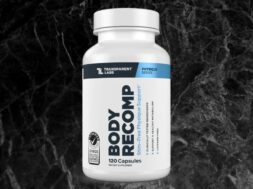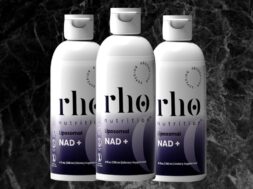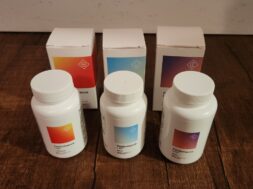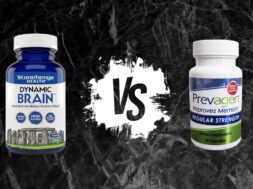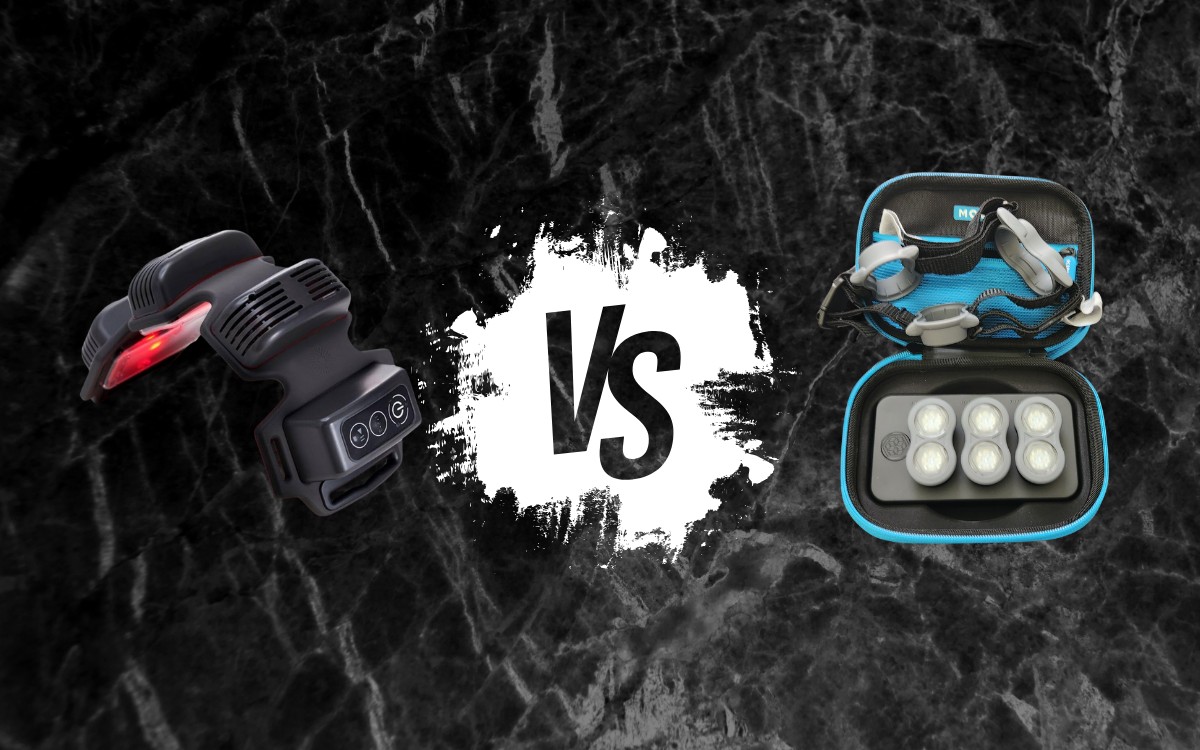
Red light therapy has moved from fringe wellness circles to serious recovery protocols used by athletes, coaches, and even clinical rehab specialists. The idea is simple: targeted red and near-infrared light helps your body repair itself faster by stimulating cellular energy production and improving circulation.
Over the last few years, I’ve tested most of the top options on the market, from bulky wall panels to compact wearable devices. Two stand out among them for athletes and active professionals who want reliable, science-backed recovery: the FlexBeam and the Kineon MOVE+ Pro.
In this comparison, I’ll break down how each performs in the real world, not in lab specs or marketing promises. I’ve used both extensively during strength and grappling sessions, dealing with the same recurring issues many active guys face: tight knees, sore lower back, and inflamed joints.
Quick Verdict
Both the FlexBeam and Kineon MOVE+ Pro are excellent portable red light therapy devices. They’re well-built, effective, and genuinely useful for athletes or anyone dealing with nagging joint pain or muscle soreness.
But if you’re looking for the most effective, clinically aligned, and performance-driven option, the Kineon MOVE+ Pro takes the win.
Its combination of red LED and infrared laser technology penetrates deeper into tissue, offering faster and more noticeable relief.
It’s hands-free, modular, and built for consistent daily use, giving you everything you want when recovery is part of your job or lifestyle. But for athletes who push their bodies hard, the Kineon MOVE+ Pro delivers superior results worth the extra cost.
| Feature | Winner |
|---|---|
| Performance & Effectiveness | Kineon |
| Wavelengths | Kineon |
| Design & Build Quality | Draw |
| Ease of Use | FlexBeam |
| Battery | Kineon |
| User Reviews | Kineon |
| Price | FlexBeam |
Quick Verdict
After testing FlexBeam and Kineon for over a month, Kineon Move+ Pro offers better value for athletes and active individuals who need targeted recovery.
The Kineon’s wearable design and dual laser/LED technology provide more precise treatment for joint-specific issues, which is crucial for anyone dealing with training-related aches and pains.
What Is FlexBeam?
The FlexBeam is a portable, wearable red light therapy device designed for localized pain relief and muscle recovery. Unlike large therapy panels that require you to stay still in front of them, the FlexBeam straps directly onto your body, allowing you to move freely during treatment.
It uses a combination of red light (625–635nm) and near-infrared light (810–845nm) to stimulate cellular repair, reduce inflammation, and improve circulation.
With three light modules connected by flexible straps, it can wrap around problem areas like knees, shoulders, or the lower back, making it perfect for athletes needing to target specific joints or muscle groups.
The device runs on a rechargeable battery and includes three pre-set programs optimized for general recovery, soreness, or deep tissue work.
Each session lasts about 10 minutes, and the optical power output (around 5.5W total) is stronger than most comparable wearables, which helps shorten treatment times.
The FlexBeam’s main appeal lies in its simplicity and mobility. It’s cordless, easy to set up, and built to handle regular use. The design feels durable enough for gym bags and travel, and the Velcro straps make it quick to secure in place.
In practice, it’s an ideal fit for busy athletes or professionals who want a recovery tool that doesn’t interrupt their day, and you can use it while working, watching film, or playing with your kids. You can read my FlexBeam review for my experience.
Pros
- Portable and easy to use
- Solid build quality and premium feel
- Effective for muscle soreness and joint stiffness
- Pre-set therapy programs for simplicity
- Convenient 10-minute sessions
- Hands-free use during daily tasks
Cons
- 10-minute session cap can feel restrictive
- Battery life (6–8 sessions per charge) requires frequent recharging
- Slightly bulky on smaller joints or curved areas
- Noticeable fan noise during operation (~59 dB)
- High price for newcomers ($399–$500)
What Is Kineon Move+ PRO
The Kineon MOVE+ Pro takes the concept of red light therapy a step further. It’s a modular, portable device designed for targeted pain relief, inflammation reduction, and accelerated recovery.
What sets it apart from most other devices, including the FlexBeam, is its dual-technology approach:
- 660nm red LED light for surface-level circulation and inflammation reduction.
- 808nm infrared laser light that penetrates up to 6 cm deep into tissues to promote cellular repair.
This laser-assisted system allows the Kineon to reach deeper layers of muscle and joint tissue, offering a more therapeutic effect, not just surface-level warmth.
The MOVE+ Pro comes with three detachable modules connected by adjustable straps, allowing you to target joints like the knees, elbows, or shoulders with precision. You can also use them separately for smaller areas or combined for larger ones.
It’s a fully hands-free system, meaning you can continue working, cooking, or playing with your kids while receiving treatment. Sessions last 5 to 15 minutes, with adjustable duration and automatic shutoff.
At $499, it’s a premium device, but one that quickly proves its worth if you train regularly or deal with chronic pain. You can read my Kineon review for my experience.
Pros
- Deep tissue penetration (LED + laser combo)
- Highly effective for pain and inflammation
- Hands-free and modular design
- Long battery life (~4 hours total runtime)
- Clinically supported wavelengths
- Durable build and comfortable straps
Cons
- High initial cost ($499)
- Learning curve for optimal placement
- Limited treatment area (needs repositioning for large zones)
- The case could be larger for easier packing
FlexBeam vs. Kineon Main Differences
Performance and Effectiveness
Both devices help reduce pain and soreness, but they differ in how deep and how quickly they work.
The FlexBeam uses standard LED red and near-infrared light, which is excellent for surface-level recovery and mild joint discomfort. I found it effective for muscle soreness after training and moderate knee pain, especially with consistent use.
The Kineon, however, operates on another level. Its 808nm laser light penetrates much deeper into tissue, making it noticeably more effective for chronic issues like my long-standing knee inflammation. After 10–15 minute sessions, I often felt tangible relief within hours, something the FlexBeam rarely achieved.
Over a few weeks, the Kineon’s cumulative benefits became clear: shorter recovery times, reduced stiffness, and less dependence on anti-inflammatory gels. It simply delivers stronger, faster results for serious users.
Wavelengths
- FlexBeam: 625–635nm (red) and 810–845nm (NIR)
- Kineon MOVE+ Pro: 660nm (red) and 808nm (infrared laser)
While both use proven therapeutic wavelengths, the Kineon’s laser component gives it a major advantage in tissue penetration and power density. The FlexBeam relies solely on LEDs, which scatter light more broadly but don’t reach as deeply.
For surface soreness and muscle fatigue, both are fine. But for tendons, joints, and deeper pain points, the Kineon clearly outperforms.
Design and Build Quality
Both devices are built to last, with premium materials and thoughtful ergonomics. The FlexBeam has a more rigid structure with three connected light modules and strong Velcro straps. It’s compact, sturdy, and feels well-made and ideal for travel.
The Kineon MOVE+ Pro, on the other hand, uses a softer silicone-coated housing that’s comfortable against the skin and doesn’t slip during use. Its modular design lets you position each light pod precisely over problem areas, which is a huge benefit for joints like the knees, where even small adjustments can make a difference.
The only minor downside is that the Kineon’s case is a bit tight when packing all components, while the FlexBeam’s feels slightly bulkier on smaller areas.
Ease of Use
Both devices are beginner-friendly, but the FlexBeam wins slightly in simplicity. One button controls everything, and the three pre-set programs make it nearly impossible to mess up.
The Kineon requires a bit more setup the first few times as you adjust the modules and straps for different areas. But once you get used to it, operation is intuitive, simply set the duration, strap it on, and go about your day.
The hands-free functionality gives the Kineon the edge for convenience. You can use it while working or relaxing without needing to stay still, which makes consistent use much easier.
Battery Life and Hardware
The FlexBeam runs about 6–8 sessions (10 minutes each) per charge, enough for a week of moderate use. Charging takes around 2 hours, and the cooling fan keeps it from overheating, though it does emit a mild hum.
The Kineon MOVE+ Pro delivers better endurance. Each module lasts roughly 4 hours (or about 24 sessions total) on a single charge, and the included dock charges all three units simultaneously in about 3.5 hours. LED indicators clearly display battery status, a small but welcome touch.
For athletes using these daily, the Kineon’s longer runtime and smarter charging setup make a real difference.
Price
| Device | Wavelengths | Session Duration | Battery Life | Price |
| FlexBeam | 625–635nm (red), 810–845nm (NIR) | 10 minutes | 6–8 sessions | $399–$500 |
| Kineon MOVE+ Pro | 660nm (red), 808nm (infrared, laser) | 5–15 minutes | ~4 hours total | $499 |
Both fall into the premium range, but the Kineon’s deeper laser penetration and better battery life justify the higher price for athletes who depend on performance recovery.
My Experience Using FlexBeam & Kineon
Over several months, I integrated both devices into my recovery routines, alternating between them during training blocks.
With the FlexBeam, results were noticeable but modest. After heavy squat sessions or long grappling nights, a 10-minute treatment on my knees or lower back reduced next-day stiffness. It was easy to use and portable enough to bring on trips.
The biggest limitation was session time, because treating multiple areas took 30 minutes or more, and the fan noise was noticeable in quiet settings.
Then came the Kineon MOVE+ Pro. I started using it daily after heavy clean and jerk days and grappling sessions where my knees usually flared up. Within a week, I noticed improved joint comfort and mobility. After two weeks, swelling after hard sessions dropped significantly.
It wasn’t just a placebo effect. The deeper warming sensation from the Kineon felt therapeutic in a way the FlexBeam never quite achieved. The hands-free setup made it part of my evening routine — I’d strap it on, play with my kids, and let it do its job.
From a coach’s standpoint, the Kineon also fits better into structured recovery systems. Its consistent power output and precise targeting make it a legitimate recovery tool.
That said, I still use the FlexBeam occasionally for surface-level muscle fatigue or travel days. It’s quicker to deploy and more compact. But when recovery truly matters, like after max effort sessions or minor injury flare-ups, the Kineon is the one I reach for.
Should You Choose Flexbeam or Kineon Move + Pro
The FlexBeam is an excellent entry point into red light therapy with its compact design, durability, and effectiveness for surface-level recovery. It fits easily into a busy lifestyle and offers real benefits for mild to moderate pain.
The Kineon MOVE+ Pro, however, is in a different league. Its dual LED and laser design, longer battery life, and superior tissue penetration make it a more complete recovery tool for athletes and high performers. It’s hands-free, modular, and built to handle consistent use without slowing you down.
At $499, it’s an investment, but one that pays off quickly if you’re regularly training, competing, or managing chronic pain.
If you’re after true, performance-driven recovery, go with the Kineon MOVE+ Pro. Both will help you recover faster, but one truly feels like it’s built for athletes who refuse to take days off.
Kineon MOVE+ Pro
Kineon MOVE+ Pro
Powerful red light therapy device designed be applied without having to sit in front of a large light panel.
CHECK CURRENT DEALS

